Coming Soon
(2088)
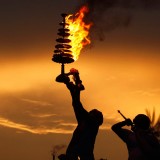
Coming Soon
(2088)
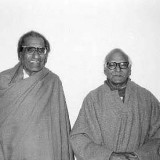
(1405)
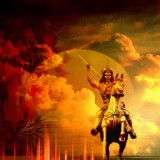
By the 1730s the Mughal Empire lay in ruins.The rulers of Delhi, the ‘Padshahs of the world’ had been humbled and the successors of Aurangzeb lived in terror of the revolutions convulsing the subcontinent of India. The spectre of religious fanaticism in the late 1600s had led to a revolt by the Hindu populace of India from the foothills of the Himalayas, the Rajputs of Rajasthan, The Jaats of Bharatpur, the Bundelas of Central India, the Satnamis of North India, The Kolis and Bhils of Gujarat, The Bedars of South India and the Ahoms of Eastern India.
None however provoked as much terror and fear in the hearts of their enemies as the slogan of the Hindu Padshahi coined by the first great leader Shivaji of the irresistible cavalry pouring from the arid hills of Western India. These were the Hindu Marathas. From the inspiration of Shivaji and Sant Ramdas they unleashed such energies into India that the Mughal Empire fell in ruin.
Following the death of Shivaji and the 27 year war of liberation the Marathas freed their homeland from Mughal tyranny when the son of the prime minister, a 19 year old named Baji Rao made an inspired speech in the court of the Maratha king.
[box_light]
‘Strike, strike at the heart of the rotting tree and the branches will fall of themselves. Then this land of the Hindus will be free’
[/box_light]
He then embarked on a ceaseless twenty year campaign in a strike northwards, every year inching nearer to Delhi and the extinction of the Mughal Empire. It is said that the Mughal emperor was in such terror that he refused a meeting with Baji Rao, fearing to sit in his presence. The holy pilgrimage routes of the Hindus from Mathura, to Benares to Somnath were made free of harassment.
The greatest of the warriors of the empire, Mughal, Pathan and Central Asian alike were defeated by Baji Rao: Nizam ul Mulk, Khan I Dauran, Muhammad Khan are but a few of the names of the warriors who failed before the Marathas. The Battles of Bhopal, Palkhed, the victories over the Portuguese invaders in Western India are amongst his great achievements.He died at the untimely age of 39 in 1739, in military camp surrounded by his army.He has been described as the incarnation of Hindu energy, ceaselessly striving for 20 years to establish the Hindu Padshahi.
His sons continued his mission of carrying the saffron flag to the gates of Afghanistan in 1758 to the fort of Attock in the North and simultaneously marching to the Southern shores of India. He represents the creative and destructive power of Dharma as he unleashed the urge of a people yearning to be free and remains as a symbol of victory to the modern day.
What others said :
J. Grant Duff says in “History of the Marathas”:
“Bred a soldier as well as a statesman, Baji rao united the enterprise, vogour, and hardihood of a Maratha chief with the polished manners, the sagacity, and address which frequently distinguish the Brahmins of the Concan. Fully acquainted with the financial schemes of his father, he selected that part of the plan calculated to direct the predatory hordes of Maharashtra in a common effort. In this respect, the genious of Baji rao enlarged the schemes which his father devised; and unlike most Brahmins of him, it may be truly said- he had both- the head to plan and the hand to execute.
“Sir R. Temple says in “Oriental Experiences”:
“Bajirao was hardly to be surpassed as a rider and was ever forward in action, eager to expose himself under fire if the affair was arduous. He was inured to fatigue and prided himself on enduring the same hardships as his soldiers and sharing their scanty fare. He was moved by an ardour for success in national undertakings by a patriotic confidence in the Hindu cause as against its old enemies, the Muhammadans and its new rivals, the Europeans then rising above the political horizon. He lived to seethe Maratha spread over the Indian continent from the Arabian sea to the Bay of Bengal. He died as he lived in camp under canvas among his men and he is remembered among the Marathas as the fighting Peshwa, as the incarnation of Hindu energy.
“Jadunath Sarkar says in his forward to “Peshwa Bajirao I and Maratha Expansion”
“Bajirao was a heaven born cavalry leader. In the long and distinguished galaxy of Peshwas, Bajirao Ballal was unequalled for the daring and originality of his genius and the volume and value of his achievements. He was truly a carlylean Hero as king- or rather as Man of action.’ If Sir Robert Walpole created the unchallengeable position of the Prime Minister in the unwritten constitution of England, Bajirao created the same institution in the Maratha Raj at exactly the same time.
“Surendra Nath Sen says in “The Military System of the Marathas”:
“The lover of Mastani knew well how to appeal to the religious sentiments of his co-religionists, although he could scarcely be considered an orthodox Brahman… Shivaji had given the Marathas a common cry, and none appreciated the potency of that cry clearly than Peshwa Bajirao. Shivaji’s military reforms he would not or could not revive, but he stood forth, as Shivaji had done, as champion of Hinduism. People of Central and Northern India saw in him a new deliverer.”
(11918)
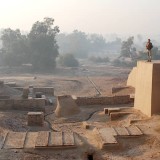
The beginning of India’s history has been pushed back by more than 2,000 years, making it older than that of Egypt and Babylon. Latest research has put the date of the origin of the Indus Valley Civilisation at 6,000 years before Christ, which contests the current theory that the settlements around the Indus began around 3750 BC.Ever since the excavations at Harappa and Mohenjo-daro in the early 1920s, the civilisation was considered almost as old as those of Egypt and Mesopotamia.
The finding was announced at the “International Conference on Harappan Archaeology”, recently organised by the Archaeological Survey of India (ASI) in Chandigarh. Based on their research, BR Mani, ASI joint director general, and KN Dikshit, former ASI joint director general, said in a presentation: “The preliminary results of the data from early sites of the Indo-Pak subcontinent suggest that the Indian civilisation emerged in the 8th millennium BC in the Ghaggar-Hakra and Baluchistan area.”
“On the basis of radio-metric dates from Bhirrana (Haryana), the cultural remains of the pre-early Harappan horizon go back to 7380 BC to 6201 BC.” Excavations had been carried out at two sites in Pakistan and Bhirrana, Kunal, Rakhigarhi and Baror in India.
(2642)

On the afternoon of January 14th over fifty thousand men lay dead on the ancient battlefield staining the holy ground with their blood. Afghan and Indian Muslim lay locked in a deadly embrace with their arch enemies, the Hindu Marathas of the Deccan.
After six hours of desperate combat the Marathas were overwhelmed by the tide of numbers of their enemies and their lines broke in despair. Their commander Sadashiv Bhau lay dead on the field surrounded by the bodies of twenty Afghans eventually giving his life in the hour of defeat .The Muslim coalition of Afghans, Pathans, Rohillas, Awadhis were victorious and marched to Delhi to celebrate their victory.
The Maratha Empire lay shattered with the death of Sadashiv Bhau and Vishwas Rao swiftly followed by the death of the Peshwa himself in grief, Balaji Baji Rao. Any yet in the defeat lay the seeds of recovery and their eventual victory over the Muslims.
The desperate struggle against the pan Islamic coalition unaided by any of the other Hindus in the regions such as the Rajputs, or Jats their campaigning in far flung regions such as Punjab and the borders of Afghanistan thousand of miles from their Deccan homeland gave them a sense of pride and achievement not seen for a thousand years amongst the Hindus of India. The hoisting of the saffron flag, Bhagwa jhanda, in the fort of Attock in modern Pakistan’s’ border with the Afghans fulfilled the prophecy of their first king Shivaji the Great.
By 1772 they were back in Delhi defeating the Pathans and in revenge pulled down their tombs and monuments of victory even consigning the remains of Najib Khan to the fire after pulling it from his grave.The courage of the army in 1761 became as a legend to the Maratha warriors who followed. The fight to the death of 60,000 famished soldiers on starving mounts against 120,000 Afghans led by one of the best generals of the day,Ahmed Shah Abdali.
On the morning of January 14th after being besieged for over two months and facing imminent starvation the Maratha soldiers clamoured around the tent of their commander Sadashiv Bhau asking to be led in a final struggle as it was better to die fighting than of starvation. Their commander dipped their hands in henna and impressed them upon some parchment as a signal of their determination. The Marathas then lined up to face their foes, twice their number. The rest is best described by an eyewitness in the Afghan army quoting from his memoirs and the letters of Ahmed Shah Abdali himself,
[box_light]
“Across the centre of the Maratha army a huge saffron banner hung, and after the marching ceased and some discharge of cannon we saw the flashing of thousands of swords raised in defiance and a great battle cry arose from the ranks of the enemy – Har Har Mahadev. Suddenly in a tremendous rush they came at us in an irresistible charge with the ground shaking and the war cry of Har Har Mahadev ringing in our ears.Right through the centre of the army they broke through, the wild charge and courage of our enemies smashed through the ranks of the battle hardened Afghans sweeping all before their path On the right wing battalions of Telegus from South India were locked in shoulder to shoulder combat with the Pathans of Shah Pasand Khan. Despite being half their number the shorter dark skinned South Indians killed almost double the number of Muslim warriors in shoulder-to-shoulder combat raging for three hours. In this dark moment the reserves of the Afghan army, the camp followers and any man we could lay our hands on were sent into the battle to hold the breaking Afghan lines, many hundreds had taken the road to Kabul sensing defeat but were pushed back by the king’s bodyguards”.
[/box_light]
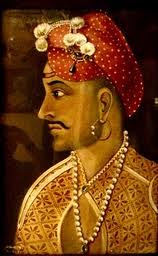 Even then, hopelessly outnumbered and outgunned the Marathas fought on. The sky was darkened with arrows and shot as it fell among them but they did not yield the ground. Three times again under Sadashiv Bhau and the sixteen year old Vishwas Rao they rallied again under the giant saffron banner and charged again like a tidal wave of the ocean till the very ground disappeared in a hail of dust, blood and bodies where only the sounds of ‘Yah Ali’ and ‘Har Har Mahadev’ could be heard.
Even then, hopelessly outnumbered and outgunned the Marathas fought on. The sky was darkened with arrows and shot as it fell among them but they did not yield the ground. Three times again under Sadashiv Bhau and the sixteen year old Vishwas Rao they rallied again under the giant saffron banner and charged again like a tidal wave of the ocean till the very ground disappeared in a hail of dust, blood and bodies where only the sounds of ‘Yah Ali’ and ‘Har Har Mahadev’ could be heard.
The Afghans were still pressed back by the wild courage of their Maratha enemies until further allies’ came to reinforce the Afghan lines and push the Marathas back. Almost six hours of ferocious fighting had left the Marathas utterly drained but again they formed again and again under the saffron banner and came charging at us in a final attempt to secure victory, Before them all darted the Peshwas son, Vushwas Rao leading the attacked until just after three o clock he was shot through the temple and his body brought before the Bhau.
[box_light]”In that black moment the Bhau tasted the bitter dregs of defeat and knowing that he could not return to his home in Poona, a thousand miles distant with the dead body of the heir to the Maratha Empire. He dismounted from his mount along with his commanders and bodyguards and charged into the advancing mass of the Afghan army and was never seen alive again by any man. In the last moments with broken muskets, they kept fighting with spears and swords until these fell from their hand, they then fought with rocks and stones and eventually grappled us with their bare hands until death took them to the home of brave warriors”[/box_light]
The Abdali had won ! but at such a cost that he gave up his dream of a permanent Indian Empire forever. Another Maratha army was marching from the Deccan to continue the fight and after a brief stay in Delhi Abdali returned to Afghanistan.
A survivor from the lost field was Mahadji Sindhia, wounded for life and escaping after a perilous journey home he recovered and helped reform and refit the Maratha forces Sindhia, The kingmaker of India, marched victoriously into Delhi in 1772 and defeated the last Pathan rising in 1788 after slaying Ghulam Khan.
The recovery of the Marathas was complete after just ten years of the Panipat saga and it is said that in the last moments of Abdalis life he was informed that his arch foes were back in Delhi, mingling the call of death with the bitterness of eventual defeat after his repeated attacks on India. The powers of fanaticism and bigotry combined with utter mercilessness were repelled by the steadfastness and resolution of the Hindus of India, a tribute and reminder that freedom is never cheaply bought with confronted with the politics of ‘Terrorisation’..
(11506)
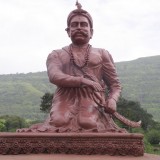
Amidst the fading light the bursts of gunfire and piles of the dead and dying a young man lay dying. Or at least he thought he was dying amidst the wreck of humanity with nearly sixty thousand warriors slain around him. The field of Panipat in early 1761 was stained red with the blood of Marathas and Afghans locked in a fatal and bloody embrace only broken after the last of many charges of Sadashiv Bhau on the numerically stronger enemy.
On the fatal battlefield Mahadji Sindhia lay wounded. His brothers were dead in the service of their people and pursuit of the dream of Hindu Padshahi as envisioned by Shivaji the Great. After seven hundred years of endless warfare the rise of the Maratha peoples had decisively tilted the balance of power between the Hindus and Muslims on the Indian subcontinent. Overreaching ambition however led to the disaster at Panipat but from that dark day the wounded and mangled body of Mahadji Sindhia was dragged from the heaps of the slain to freedom.
His father Ranoji Sindhia had been one of the cavalry leaders of the all conquering Maratha hero Baji Rao as he subdued most of North India. An early start at the age of 10 in the company of his brothers and father on their yearly forays swiftly displayed his aptitude on the campaign trail and ability to mould with the swift and tireless Maratha army. From the deep South of India to the invasion of Punjab in 1757.Mahadji Sindhia at an early age learnt the modes of warfare of Mughal, Afghan, North Indian and Europeans. He watched the irresistible waves of horsemen humble the once mighty Mughals and destroy the pride of the Pathans. But from the field of Panipat the dreams of empire were laid low to a point where none believed they could rise again.
A slow recovery from his wounds led to his elevation to the head of the Sindhia clan and his valour in helping defeat Tipu Sultan exalted his status. The shaky recovery of the Marathas was sealed by their decisive defeat of the Nizam Ali and thoughts of revenge now occupied their minds.
The treacherous leaders of the Indian Afghans was Najib Khan who under the tutelage of Ahmed Shah Abdali had dominated the remnants of the Mughal Empire in North India for the decade after the Battle of Panipat. They had been held at bay only by the valour of Suraj Mal leading the clans of Hindu tribesman known as the Jats in the Mathura region and the arms of the Rajput kingdoms in the deserts of Thar.
But now a new Maratha army was marching again to North India in 1769 to complete their uncompleted mission and amongst them marched Mahadji Sindhia. After a bitter battle before the gates of the Red Fort of Delhi the Afghans fled leaving the Mughals to face the Marathas alone.
Frantic efforts to collect a pan Islamic alliance to defeat the Hindus resulted in a heavy defeat within a short span of time for the Afghans as they were driven from Delhi northwards to Rohilkhand. There following the death of Najinb Khan vengeance caught up with the Afghans as his tomb was torn open in contempt and his bones thrown into a blazing fire. His grandson Ghulam Qadir however escaped. Back in Delhi the Mughal emperor Shah Alam in quivering fear allowed Mahadji Sindhia to become the defacto ruler of the remnants of the Mughal Empire ruled in the name of the Maratha Peshwa.
This was a historical moment which sent a ripple of pride throughout the Maratha Empire a culmination of their century old struggle against the Mughals and foreign domination and an apt succession to the vision of the great Emperor Shivaji. It was also a timely reply to the efforts of the last Muhammadan marauder to test the borders of ancient India – the Afghans, as their dreams of an Indian Empire fell into the dust.
A new enemy however was hovering on the horizon to dim the tide of successes. As the millennia old struggle seemed to have tipped irretrievably towards the Hindus in the rise of the Maratha Empire , the independence of the Rajputs, the rise of the Jats and Bundela kingdom and the rise of the Ahom peoples of eastern India a new threat was rising
The encroachments of European predatory civilisation was steadily overwhelming all indigenous cultures of the world. The regional powers of the erstwhile Mughal Empire was falling one by one to the Hindu resurgence from the end of the 17th Century onwards as the tides of history began turning against them.
Modern trained British forces was already on the subcontinent backing the nefarious tactics of the East India Company and following the devastating raids on Bengal by the Maratha cavalry from the 1740’s onwards the Nawabs of Bengal clung to British protection to save them. The British however continued to pay the yearly tribute from Bengal to the Maratha Empire until the disaster of Panipat. Thereafter the Marathas were locked into a battle for survival and then revival. The intervening decade saw the British establish their stranglehold over Bengal and began the economic rape and devastation of that province.
The attacks of the Marathas and Jats on the province of Awadh under led their Nawab to cling to British protection in 1772 and gave them the opportunity to meddle in Indian affairs. Very soon apart from Mysore virtually all the remaining Muslim states made alliances with the Europeans to preserve themselves against their Hindu adversaries.
The same year saw the death of the head of the Maratha Empire, Madhav Rao and an ensuing struggle for control in which the British saw the chance to push their feet into India. A large and well equipped British forces began to advance towards Pune, the capital of the Empire to be faced by Mahadji Sindhia.
A furious campaign saw the lands before the marching British fired and waves of Marathas cavalry harrying and attacking the British in endless attacks day and night. Eventually desperate with their supplies breaking the British began to retreat to be caught in a pincer movement at Wadgaon and beaten to utter exhaustion. The British force surrendered and signed a treaty of peace with the Marathas in a humiliating loss witnessed by the entire Indian spectrum. The Punic bad faith of the British however allowed them to repudiate the treaty as soon as they could and the war continued for another 7 years. Despite the calling of further troops and resources from across the Empire the British East India Company was eventually unable to continue the struggle and made peace in 1782.
The main architect of the war and peace was Mahadji Sindhia whose stature now rose above all others. He immediately set march for Delhi again and swept aside the pretensions of independence that the Mughals had started reasserting. The man of faith and action had now become the most powerful man in India holding the Mughals, Afghans and British at bay. He swiftly began to match the Maratha cavalry with a formidable Europeanised infantry units and in the north an alliance with the Hindu Jat tribes of Bharatpur. The empire now starched to the Sutlej river in Punjab with virtually all states being directly or indirectly under their control
This however led to deep resentment amongst the Muslim princes of India, They had either clung to the British for protection or were fleeing across the land in search of protection. Tens and thousands of leaderless Muslims soldiers were sitting idle after the breakup of their states. The leadership of the Afghans was taken up by Ghulam Qadir and that of the Mughal soldiers Ismail Beg. In 1788 whilst Sindhia was in Rajasthan the two warlords gathered their troops to them and raised the banner of revolt. Swarms of Muhamadan soldiers, to whom the domination of the Hindus was intolerable, gathered to them and very soon vast forces were arrayed against Sindhia in the North of India. Delhi itself was taken by Ismail Beg and Ghulam Qadir as the banner of Jihad was raised to unite the confederates.
Sindhia situation was become desperate at the British were also now pressing the frontiers eager to take revenges for their previous humiliations and the spectre of the Panipat campaign began to haunt the Marathas. However with a series of masterful strokes Mahadji combined the waves of Maratha horsemen with the Europeanised Campoo regiments whilst stocking the forts and castles with the sturdy Hindu Jat warriors.
The forts of Agra and Mathura were stormed in a series of bloody battles and the fleeing Muslim coalition fled to Delhi for protection. Here Sindhia caught up with them an enforced a siege on the city. Inside the situation was become increasingly desperate. The calls of the faithful to resist the infidel were beginning to fail and the Emperor Shah Alams heart failed him. Infighting erupted between the Mughals and Afghans and in fury the Afghans cut out the eyes of the Emperor and dishonoured his family only being stopped from murdering the entire royal family by Maniyar Singh a Rajput warrior.
Sindhia took the opportunity to attack the city and after a furious struggle in which fighting erupted from outer walls to the Red Fort he broke the defences. Thousands of Afghans were stripped and dragged through the streets reviled by the city folk who they had tormented. The Mughals fled in utter defeat whilst Ghulam Qadir was captured. The blind Mughal Emperor begged Sindhia for deliverance with the break up of the Muslim alliance.
Indeed it proved the last Islamic enterprise to rule India. The unbroken resistance of the Hindu clans throughout the medieval period had prevented the Turks and Mughals alike from creating little more than armed settlements in the plains of India. Vast tracts remained under the control of Hindu states and warlords which by the close of the 1600’s had lead to huge uprisings which first shook and them brought tumbling down the corrupt edifence of the Mughals. And now a hundred years later the last vestiges of empire combined in a last alliance to break the millennia old resistance of the Hindus to end in utter defeat. Ismail Beg became a wanderer with a handful of followers whilst Ghulam Qadir lay in prison and then to gratify the vengeance of the blinded Shah Alam Sindhia ordered the Afghan prince to be dragged through the streets of Delhi for execution and his dead body to be hung from a tree.
By 1792 Sindhias triumph was complete. His hold over the Maratha Empire in the name of the Peshwa was sealed and defacto over the nominal empire of the Mughals. His name and fame had brought the once proud Mughals and Afghans to their knees and humbled the power of the otherwise victorious British Empire. As a colossus he strode over the plains of Northern India with the inspirational cavalry tactics of his noble predecessor Shivaji the Great combining it with the new model of Europeanised infantry, the campoo regiments. Factories for armaments had been established and the economic stability after decades of warfare was now ensured. The remaining Muslims states, barring that of Tipu Sultan only survived due to the protection and economic pillaging of the British who in their turn shied away from confronting the mighty Sindhia.
His calm nature amidst the turmoil’s of the age stood in stark contrast to his adversaries. His devotion to his spiritual Guru and an unshakeable faith enabled him to deal with confront and defeat the most implacable enemies. His understanding of the political and historical landscape enabled him to complete the military defeat of the remaining Muhamadan powers in the Indian subcontinent and establish a system capable of taking on the European encroachments.
His death in 1795 at a relatively young age changed the political landscape but his contribution is not forgotten or can it be underestimated. He showed that the combination of indigenous innovation and value could not only compete with but emerge victorious over a millennia of genocidal attacks and the tidal wave of monolithic globalisation.
(7552)
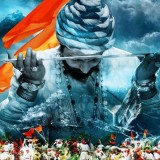
One thousand years of slavery. Millennia of defeat and domination caused by a dogmatic adherence to the doctrine of ahimsa, preventing an effective resistance to foreign domination. This is what most Hindus are brought up to believe about their history.
These and other such theories are happily put forward as history of Hindus for the past 14 centuries and postulated by self proclaimed scholars from both within and without the Hindu fold. It was something I have heard from my youth and accepted without question.
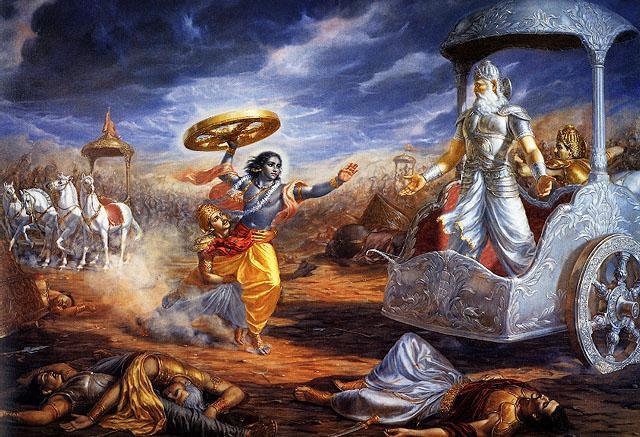 However some thoughts rankled in my mind. If the Hindus were truly slaves for a thousand years plus, then how have we survived to this day with dignity and honour and with a spiritual tradition stretching back to the mists of time and beyond? Many other cultures, civilisations and spiritual traditions have been reduced to museum pieces, but the words of the Holy Vedas are recited in an identical fashion today as they were thousands of years ago when first revealed to the Rishis.
However some thoughts rankled in my mind. If the Hindus were truly slaves for a thousand years plus, then how have we survived to this day with dignity and honour and with a spiritual tradition stretching back to the mists of time and beyond? Many other cultures, civilisations and spiritual traditions have been reduced to museum pieces, but the words of the Holy Vedas are recited in an identical fashion today as they were thousands of years ago when first revealed to the Rishis.
This is no mean achievement.How did Hindus survive and manage to maintain a civilisational identity stretching into the dawn of human history? How was Sanatana Dharma kept alive as a living presence in the world, and indeed regenerated over time if the Hindus were slaves for so long? This impelled me to look for the truth myself, and undertake a study of the history of the Hindu people.
The beginning of Hindus’ “thousand years of slavery” is supposed to have begun with the overrunning of India by Muslims of Arab and Turkish origin. It is popularly believed that Hindus put up a feeble defense and that the Islamic armies had a cake walk through India. If we examine at what actually happened, however, we see that Hindus put up a huge struggle, which was eventually victorious.
 Following the death of their founder, Muhammad we see the Arab Khilafat expand swiftly over the Middle and Near East, pouring over the deserts of North Africa and crossing the waters to begin a six century occupation of Spain and beyond. The combined might of Christian Europe struggled again and again to reclaim the ‘holy lands’ to end in bitter failure with the rise of the Ottoman Empire, who ruled over a large part of Eastern Europe for centuries.
Following the death of their founder, Muhammad we see the Arab Khilafat expand swiftly over the Middle and Near East, pouring over the deserts of North Africa and crossing the waters to begin a six century occupation of Spain and beyond. The combined might of Christian Europe struggled again and again to reclaim the ‘holy lands’ to end in bitter failure with the rise of the Ottoman Empire, who ruled over a large part of Eastern Europe for centuries.
On the other side, the lands of Iran, home of the ancient and historical Persian civilisation fell to the yet undefeated Arab warriors and within a short period the indigenous culture becoming extinct or expelled, today being largely the confine of museums and relics. The Arab hordes then pushed into the Indian Subcontinent, land of the Hindus, overwhelming the small desert region of Sindh and then attempted to push and conquer the existing Hindu kingdoms. Here however their advance was stopped.
With the inspiration of Sant Gorakhnath the warrior clans of the Rajputs united under their legendary king Bappa Rawal and in a series of Battles known collectively as the Battle of Rajashtan inflicted a heavy defeat on the Arab invaders in 738 CE. Any further advances by the Arabs were repelled, impelling the formation of large organised Hindu states in the centre and west of India. Frustrated by their failures in India the Arabs turned northwards shortly after defeating the Chinese Empire in the Battle of Talas in 751 CE opening the gate for the Islamisation of Central Asia. India remained unaffected for another three hundred years. (the “thousand years of slavery theory” was beginning to shake)
The Islamisation of Central Asia began to grow apace and one by one the ancient Buddhist kingdoms began to totter and fall as tribe after tribe joined the ranks of the growing Muslim religion. The destruction of Buddhism and its centers in the region prompted an exodus towards India, and the conversion of the remaining clans to Islam. The Muslim armies were expanded, filled with the zeal and energy of new converts, who were sent spiraling towards the Middle East to fight the advancing Crusaders under the leadership of Saladin. Another wave of attacks poured towards India resulting in large scale damage and loot from the subcontinent under the leadership of Mahmud of Ghazni around 1000 CE.
 Two further centuries passed as further advances were resisted until a breakthrough around 1200 CE allowed the invaders access to the North Indian plains. The remaining Buddhists were slaughtered or converted in an unprecedented orgy of violence and horror. The majority Buddhist regions of Afghanistan, Kashmir and West Punjab joined the crescent banner of Islam. However the conversion of Hindus was slower and the resistance was more fierce. Hindu warrior clans kept up a relentless resistance fighting from the deserts, the mountains and the forests. The heavy cavalry of the Muslim Turks which had proved fatal to the Crusaders of Western Europe were victorious on the plains of North India but this did not prevent an endless cycle of attack and counter attack by the Hindus.
Two further centuries passed as further advances were resisted until a breakthrough around 1200 CE allowed the invaders access to the North Indian plains. The remaining Buddhists were slaughtered or converted in an unprecedented orgy of violence and horror. The majority Buddhist regions of Afghanistan, Kashmir and West Punjab joined the crescent banner of Islam. However the conversion of Hindus was slower and the resistance was more fierce. Hindu warrior clans kept up a relentless resistance fighting from the deserts, the mountains and the forests. The heavy cavalry of the Muslim Turks which had proved fatal to the Crusaders of Western Europe were victorious on the plains of North India but this did not prevent an endless cycle of attack and counter attack by the Hindus.
It took nearly another hundred years under the leadership of the infamous Aladdin Khilji for the Muslims Empire firmly established itself in India. This mantle was inherited by the Tughlaqs only to lead to a revival from the Hindu population.
 The religious traditions of India had been severely mauled by the endless bloodletting over the past two centuries. Many important institutions and temples were destroyed. Prosperity suffered, as it tends to in times of continuous war. This created a certain weakening of Hindu society. Religion became preserved in rituals which were less and less understood. Sanskrit learning was on the decline. Caste became more rigid.
The religious traditions of India had been severely mauled by the endless bloodletting over the past two centuries. Many important institutions and temples were destroyed. Prosperity suffered, as it tends to in times of continuous war. This created a certain weakening of Hindu society. Religion became preserved in rituals which were less and less understood. Sanskrit learning was on the decline. Caste became more rigid.
However, a religious renewal took place in the form of the “Bhakti movement”. A simplified form of Hinduism particularly suitable to the times emerged. A new wave of spiritual teachers preaching that simple devotion and love of God and love of all people and creatures is the simplest root to salvation. A message of defiance and brotherhood from saints and rishis from all corners of India emerged. From Tukram and Namdev from the west of India, from Nanak in Punjab, from Chaitanya in the east and Kabir in the north plus many others, the message of dharma revived itself in the teeth of an implacable enemy.
The fearless postulating of the brotherhood of all mankind defied the savagery raging around them as the Turks endeavoured to convert the entire subcontinent to Islam and the Hindus fighting tooth and nail to resist. The Muslim empire seemed to rest on specified military encampments and cities surrounded by a sea of hostile Hindus usually left to their own devices. Hundred of Rajahs and Maharajahs dotted the nation living in virtual independence from the central authorities in which traditions of culture and religion were maintained unchanged through the centuries.
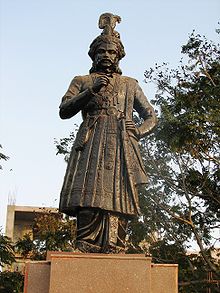 Other larger organised resistance emerged in the Vijaynagara Empire of South India around 1336 CE which consolidated Hindu resistance for over two centuries. In the north the revival of the Rajput kingdoms and the defiance of kings like those of Orissa under the Gajapati Kings, the hills of Punjab under Jasrath Khokhar and the rise of neo Hindu kingdoms in the north east of India along with the entire hill region signaled the revival of Hindu rule over vast tracts of India.
Other larger organised resistance emerged in the Vijaynagara Empire of South India around 1336 CE which consolidated Hindu resistance for over two centuries. In the north the revival of the Rajput kingdoms and the defiance of kings like those of Orissa under the Gajapati Kings, the hills of Punjab under Jasrath Khokhar and the rise of neo Hindu kingdoms in the north east of India along with the entire hill region signaled the revival of Hindu rule over vast tracts of India.
A steady period of Hindu growth then ensued until by the dawn of the 1500’s the southern region of India was dominated by the mighty king of the Vijaynagara Empire, Krishnadevarya and the north by the revival of the valiant Rajputs under the charismatic leadership of Rana Sanga (grandfather of the equally illustrious Rana Pratap).
The tides of history however turned again – with the influx of cannons and other artillery utilised by Babur the Mughal entered into the Indian subcontinent against which the wild charges of the Rajputs and Pathans had no answer. The reckless disregard of their own lives in the defence of dharma saw a series of battles in which the Hindu forces fought quite literally to the last man woman and child, most famously the siege of Chhitor in 1567. The utter refusal of the Hindus to surrender in the century old tussle with Islam for political control over the subcontinent was a lesson not lost by the new Emperor Akbar.
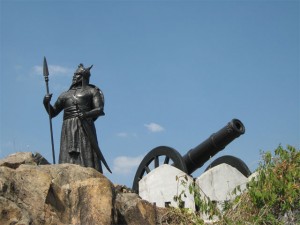 He instead moved away from the tenets of Islam to a new faith of the Din i Ilahi. By following the age old traditions of religious toleration in India he endeared himself to the majority population and through a period of compromise and alliance brought a brief period of peace to the troubled land.
He instead moved away from the tenets of Islam to a new faith of the Din i Ilahi. By following the age old traditions of religious toleration in India he endeared himself to the majority population and through a period of compromise and alliance brought a brief period of peace to the troubled land.
This tenuous alliance was shattered by his descendant Aurangzeb who in his zeal for the establishment of an Islamic state caused an upheaval which left the Mughal Empire fall beyond all hope of repair.
The renewal of the civilisational Hindu-Islam conflict saw the rise of a generation of Sants and holy men inspiring the people for the defence of dharma which saw the might of the Mughals humbled by Rajputs, Marathas, Jats, Satnamis, Ahoms, Bundelas and others. In a cataclysmic wave of defiance the Mughal Empire lay broken and on its ruins rose a number of Hindu states competing for space in the subcontinent.
The inspirational rise of the Maratha king Shivaji and his bold defiance of the Mughal empire in the noontide of its realm is an apt example.
Who did the British wrest control of India from?
When the British came on the Indian scene, it is thought or assumed by many people that he British took control of India from the Mughals. This is not true. In fact, by the time that the British emerged as a major force in India, the Muslim political power in the subcontinent had been virtually cast down.
The situation is best defined by a British author, H.G.Keene
[box_light]
The idea, however, that the British have wrested the Empire from the Mohamadans is a mistake. The Mohamadans were beaten down — almost everywhere except in Bengal — before the British appeared upon the scene; Bengal they would not have been able to hold, and the name of the “Mahratta Ditch” of Calcutta shows how near even the British there were to extirpation by India’s new masters. Had the British not won the battles of Plassey and Buxar, the whole Empire would ere now have become the fighting ground of Sikhs, Rajputs, and Mahrattas and others. Except the Nizam of the Deccan there was not a vigorous Musalman ruler in India after the firman of Farokhsiar in 1716; the Nizam owed his power to the British after the battle of Kurdla in 1795), and it was chiefly British support that maintained the feeble shadow of the Moghul Empire, from the death of Alamgir II. to the retirement of Mr. Hastings. Not only Haidarabad but all the other existing Musalman principalities of modern India owe their existence, directly, or indirectly, to the British intervention.
[/box_light]
 The march of western civilisation ended the Hindu revival at a time when Hindus exercised control over almost the entire subcontinent. But it took Three wars with the Marathas, two wars with the Gurkhas, war with the Jaats, also smaller ranging wars with the Santhals, Sanyasis and many others .
The march of western civilisation ended the Hindu revival at a time when Hindus exercised control over almost the entire subcontinent. But it took Three wars with the Marathas, two wars with the Gurkhas, war with the Jaats, also smaller ranging wars with the Santhals, Sanyasis and many others .
Hindus unwillingness to surrender culminated in the huge uprising from the predominantly Hindu sepoys in 1857 which almost brought the British Indian Empire to a swift conclusion being the largest anti colonial uprising in history. The end result was 90 years of imperialist rule.
This was matched by a concerted disarming of the population by the British rulers, leaving only select regions free from the disarming which were perceived as loyal to the British under the flawed marital race theory. This theory propagated by the forerunners of the concepts of eugenics and Nazism believed the Indian races could not match the British combination of physical and mental facilities.
Thus a large percentage of Hindu population, despite holding sway of almost all of the Indian subcontinent were delegated into the non martial section by the British. Other sections believed to be of sufficient physical abilities (but not mental development) were delegated by the Imperialists as ‘martial races’ This flawed theory was propagated as an absolute truth (still followed by some) and together with the disarming of the population led to the diminishing of the martial spirit amongst Hindus.
 However the theories propagated by the British found challengers from the Hindus. Spurred by a revaluation of their history and the knowledge of western theories a new revival began to take fruit. From the universal preaching of Swami Vivekananda to the guns of the Anushilan Samiti the Hindus were at the forefront of a growing anti colonial challenge to the most powerful empire in the world. Finally finding control of the subcontinent untenable in the teeth of endless opposition the British Indian Empire collapsed in a wave of unprecedented bloodshed which has seen a slow and steady spread and reach of the Hindu world.
However the theories propagated by the British found challengers from the Hindus. Spurred by a revaluation of their history and the knowledge of western theories a new revival began to take fruit. From the universal preaching of Swami Vivekananda to the guns of the Anushilan Samiti the Hindus were at the forefront of a growing anti colonial challenge to the most powerful empire in the world. Finally finding control of the subcontinent untenable in the teeth of endless opposition the British Indian Empire collapsed in a wave of unprecedented bloodshed which has seen a slow and steady spread and reach of the Hindu world.
So again, I was stumped by this ‘thousand years of slavery’ theory. I was even more surprised to find this postulated by otherwise very earnest Hindus in the mistaken belief of their own history.
When examining our history I saw a spirit of defiance stretching over a thousand years in the face of implacable and merciless enemies, who put an end to many other cultures and civilisations. The same forces which had overcome virtually every indigenous civilisation in the world had thrown their entire might against India – and failed.
 Attack after attack was defeated. Horrific massacres did not force the people to abandon their religion and identity. The destruction of holy places did not see dharma die but rise again and overcome their opponents with the power of truth. The banner of freedom was raised generation after generation despite the best attempts of some vested parties to blur the truths and sacrifices made again and again.
Attack after attack was defeated. Horrific massacres did not force the people to abandon their religion and identity. The destruction of holy places did not see dharma die but rise again and overcome their opponents with the power of truth. The banner of freedom was raised generation after generation despite the best attempts of some vested parties to blur the truths and sacrifices made again and again.
So 150 years of effective rule by the Muhamadans and 90 years of British rule was suddenly expanded into ‘one thousand years of slavery’ an utterly absurd contention is being bandied about like an absolute truth but has failed to hide the facts that remain unaltered in history. Ancient faiths like Buddhism and Zoroasterism were almost obliterated from the Middle East, Central Asia and India but the Hindus rose in defiance to emerge even stronger at the end of the blood soaked millennia.
Even well wishers of Hindus, lost in their Victorian outlook on India have propagated the same absurdities in total insult of the enduring Hindu spirit. The spirit is best exemplified by the renowned historian Sir Jadunath Sarkar when talking of the legendary Maratha king Shivaji:
[box_light]He [Shivaji] has proved that the Hindus can still produce not only clerks and soldiers but rulers of men. (…) Shivaji proved that the tree of Hinduism is not really dead – that it rose from the seemingly crushing load of centuries of attack and put forth new leaves and lifted its head to the skies.[/box_light]
Read Part 2 of this article > Did the British save Hindus ?
(41258)